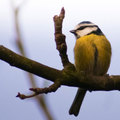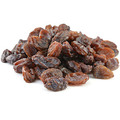Lessons from the land: badgers and tuberculosis
Dick Roper turned his Cotswold farm into an experiment to find answers to the tuberculosis epidemic ravaging swathes of the countryside – and the clues revealed helped to make a dramatic difference to his herd. By Jane Taylor

There is an official set of maps at the Department for Environment, Food and Rural Affairs showing the spread of tuberculosis in cattle over the past 25 years. A civil servant decided to paint the maps red, and the effect is shocking.
A largely empty Great Britain in 1986 has a few random spots and splodges, representing the 235 cattle who tested positive for bovine TB. With each successive map the spots increase and the splodges leak like ink on blotting paper. The 2010 one has a nasty red smear across half of the south of England and Wales. It’s an impressionistic representation of the 28,541 cattle that tested positive for TB in England that year and the nearly 25,000 that were killed. But it makes the point. Bovine TB is a slow-developing chronic wasting disease that carries a death penalty for all cattle testing positive.
Incredibly, Britain was virtually TB-free from the 1950s to the early 1980s. The slaughter tally for 2011 topped 30,000. The rigorous testing regime, the roller coaster of hope and disappointment and premature loss of so many fine beasts, drives farmers, who have spent generations building up their herds, to despair. Inspections, killing and compensation for lost livestock costs us all close to £100m a year, and more millions have been sunk into research, yet we have no answers as to why the epidemic has happened, or how to fix it.
Dick Roper manages a 3,500-acre estate in the Cotswolds. The son of a Herefordshire farmer, he’s worked there for 30 years, and knows of no better way of life. As he drops the tailgate of his truck to let his eight sheepdogs out, the lettering on his T-shirt proclaims ‘Another Tough Day In Paradise’. But Dick isn’t in paradise, he is in the middle of a TB hot spot and responsible for 500 organic beef cattle. All the neighbouring herds have the disease, yet for eight years he kept his cattle TB-free, a feat that has brought him a great deal of satisfaction and a modest amount of celebrity.
It is widely accepted that badgers are the main carriers of the disease. Dick has several setts on his land, and, like his farming neighbours, believes badgers are responsible for infecting cattle. Bovine TB arrived at Dick’s farm in 1999, just after they’d converted to organic. “It was a disaster,” he says. Other farmers might rant about the unfairness of legal protection that prevents them shooting badgers but Dick started reading up and asking questions of vets who were around in the TB-free years.
He formulated a theory and turned his farm into an experiment. “Up until 1985 it is obvious that badgers didn’t have TB, otherwise the cattle would have caught it again as soon as they’d been cleared,” he says. This deduction was to be key to his plan of action. The National Farmers Union (NFU) has waged a long campaign to get the English and Welsh governments to approve badger culls. It is on the verge of success.
Two pilot culls in West Somerset and the Forest of Dean are expected to go ahead in the autumn with the possibility of up to ten licences to cull being issued each year. The aim will be to kill at least 70 per cent of badgers in each cull area for the next four years – a previous trial found that this level of reduction had positive effects on cattle TB. It’s a controversial policy, beset by doubts about whether it can work, concerns for badger welfare, and anxiety about opposition, conjuring farmers and bands of animal rights protesters.
Dick Roper does not advocate badger-killing. He asks a more troublesome question: why have badgers become so sick in the past 25 years? Solve that problem and you could resolve the issue of TB. He hypothesised that the animals had developed weakened immune systems when changes in their diet deprived them of essential nutrients and may have exposed them to mould-borne toxins. “The big change in the badger’s diet from the early 1980s,” he says, “was maize. It was introduced in the south-west as cattle fodder, and badgers can’t get enough of it.” Farmers know the maize is nutritionally deficient, and give their cattle top-up supplements.
In 2000, Dick cleared his fields of maize and started to place blocks of fortified molasses around the estate, in effect providing a mineral supplement for the badgers. Until 2008 the estate stayed completely TB-free, an island of health in a sea of infection. Every year, when Dick took his cows to a farm seven miles away for summer grazing, some would come back infected. Once back on the estate, with the TB animals slaughtered, the herd would stabilise again. Remarkably, given Dick’s hot-spot location, over the past four years there have only been a small number of cases on his farm, thought to have been caused by infected badgers bordering the estate.
Dick has shared his ideas with anyone who would listen and a handful of farmers have adopted his supplement recipe. But John Royle, the NFU’s chief farm policy adviser is doubtful that it would work. “I’ve not heard of anybody who feeds badgers for this purpose,” he says.
The truth of it is that Dick is an intuitive farmer with an inquiring mind, but he has hit a something of a brick wall. In 2009 he stopped feeding his badgers. Why would he do that? “If I don’t feed the badgers and I don’t get a significant TB problem, I still can’t prove it’s my food. As long as I have clear badgers on the estate, they’ll keep others out so it will stay TB-free. If I carry on feeding them, I’ve kept my cows healthy but proved nothing. There are many things it could be, I’m not saying I have the answer.”
Then who has? We still know very little about how TB spreads and why badgers have it. Dick may not have answers but he asks good questions. He has kept the one about toxins in the maize to himself until now, because he suspects people will dismiss him as barmy. But a Government scientific expert confirms it is not a mad theory, just one that hasn’t been investigated. They are, however, researching how to reduce the number of diseased badgers, which comes down to kill or cure. The most powerful argument against a badger cull is the ‘perturbation effect’. In an extensive eight-year official trial cull in the hot-spots of west and south-west England, scientists found that when the badgers’ settled social groups were upset through culling, they would scatter, moving away and spreading the disease more widely.
Yet if a killing strategy seems unpromising, a cure is equally fraught. Last year the National Trust committed £320,000 to a four-year vaccination programme on its Killerton Estate in Devon, another TB hot spot with 18 tenant farmers. The NFU’s John Royle says the costs and complications of injecting badgers will deter
most farmers from following suit.
“The results are unproven,” he says. “How can farmers invest £5,000 to £6,000 a year for an unknown? The cost of licensed shooting is considerably less.” An oral vaccine would be a more practical (and cheaper) option but is still many years away. Defra is working towards a future option of cattle vaccination against TB, and by the end of the decade it may be possible to breed cows with superior genetic resistance.
With all its mystery and complexity, what makes the bovine TB issue so powerfully polarising is the emotion it arouses. “People who love badgers don’t want them to take the blame,” Dick Roper says. “Farmers, who adore their cows, just want the badgers not to be there.”
While others plough their own research furrow, this thoughtful farmer continues to do what he knows best, scattering small seeds of inquiry that may yield vital clues towards helping us solve the most perplexing and distressing animal welfare issue of our generation.










